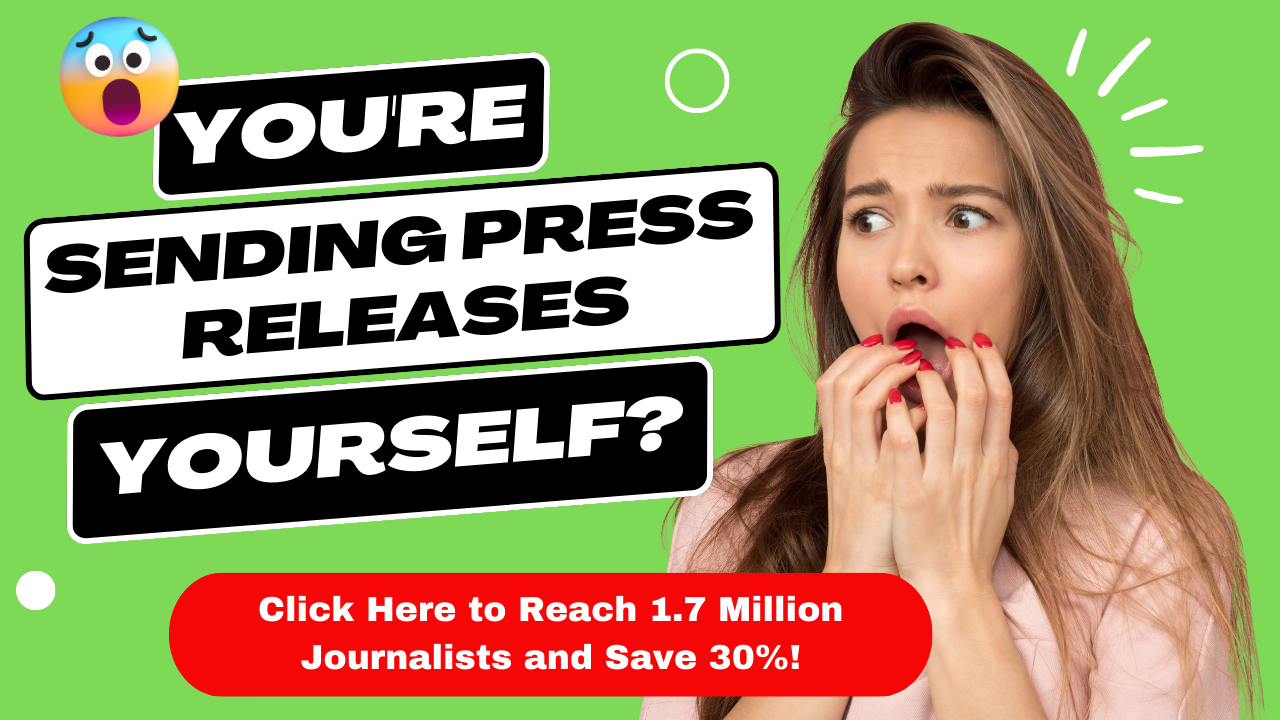The Press Release Framework
 A well-structured press release is crucial for communicating important news about your company, product, or event to the media and the public. The press release framework provides a systematic approach to organizing information in a clear, concise, and engaging manner. Here’s a comprehensive guide to crafting an effective press release.
A well-structured press release is crucial for communicating important news about your company, product, or event to the media and the public. The press release framework provides a systematic approach to organizing information in a clear, concise, and engaging manner. Here’s a comprehensive guide to crafting an effective press release.
Writing Your First Press Release
You’ve been tasked to write up your first press release. You’ve seen plenty of them over the years and even done some in school but this is your first time writing a press release as a professional. As a result, you want to make sure you do it right the first time and knock it out of the park.
>Like many first time press releases writers you may not know whether to just write the press release or outline it first. When I first started out I hated outlining; now, though, I’ve seen the light. It’s a great way to get your thoughts in order and let you weed out problems before they actually occur.
Here are some tips to help you get your framework down before you actually commit to the piece at hand.
The Beginning of Your Press Release
Obviously the beginning of your press release is most important because it “hooks” the reader into reading the rest of the piece. If the beginning isn’t interesting, nobody will care and your press release will go unnoticed.
Outlining the title isn’t really possible, but it is vital to getting your press release noticed. Try to make your title as tight, concise, and informative as possible. You want people to glance at it and immediately want to read the rest of the release.
But there’s still the rest of the press release to worry about. Again if it’s not amazing, reporters, editors, and the public won’t care about it. First up is your opening sentence. Just like the title, it should be very informative and concise. However, it should also explain the title and give an idea why readers should care.
After the opening sentence, though, you have your first real meaty paragraph. Press releases operate on the “inverted pyramid” model as in all the important stuff goes up top and everything else is for the bottom of the release. So your second paragraph should be full of the who, what, where, when, and why of your story.
Here are the Key Elements that Should be in the Beginning Section of Your Press Release:
-
1. Headline
Your headline should be attention-grabbing and summarize the most important aspect of your news. It should be:
- Clear and concise (typically under 10 words)
- Written in active voice
- Contain keywords relevant to your announcement – Example: “Tech Startup Revolutionizes Remote Work with AI-Powered Collaboration Tool”
-
2. Dateline
-
Include the release date and origin of the press release:
[CITY, State] – [Month Day, Year] -
3. Lead Paragraph
The opening paragraph should answer the five W’s (and sometimes H):
- Who: The main subjects involved
- What: The event or development
- When: The time and date
- Where: The location
- Why: The reason or purpose
- How: The method or process (if relevant)
This paragraph should capture the essence of your announcement in 2-3 sentences.
The Middle & End of Your Press Release
Now here’s where you have to put in even more work. You have to ask yourself: do I have enough content for two more paragraphs? Three more? Keep in mind the longer your press release is the less likely it is some readers will check it out. If it’s way too long a reporter won’t give it the time of day. And if it’s full of nonsense there’s no reason to even send it in.
But you also don’t want it super short. This makes it seem like you don’t even have a story. So the next couple of paragraphs are vital to maintain your readers’ attention. Make sure you’re still adhering to the inverted pyramid in that if you have any essential info it should go in your second paragraph.
After that, though, think of anything else you might want to include. Do you have a spectacular quote from someone, or some stats to back up your point? How about factoids that wouldn’t fit anywhere else, like the fact your company won multiple awards for the product line you’re announcing?
You want to end with a bang, as well, not a whimper. If you have a strong press release but it ends up fizzling out with a weak sentence or two, that’s all many will remember. Don’t feel like you have to close out with a “summary” sentence either – as long as you conclude with another impactful sentence that gives even more information to the reader you should be fine.
The Key Elements of the Middle and End of a Press Release Include:
-
4. Body Paragraphs
Expand on the information provided in the lead paragraph. Typically, include:
- Background information
- Relevant quotes from key stakeholders
- Supporting data or statistics
- Context and significance of the announcement
-
5. Boilerplate
Provide a brief, standardized description of your company or organization. This could include:
- Company’s mission or purpose
- Key products or services
- Notable achievements or recognition
- Year founded and headquarters location
-
6. Contact Information
Include details for a media contact person:
- Name
- Title
- Phone number
- Email address
-
7. End Notation
-
Indicate the end of the press release with three hashtags centered on the page: ###
Organize information in descending order of importance (inverted pyramid style).
Additional Tips to Craft a Results-Getting Press Release:
- Keep it concise: Aim for 300-500 words.
- Use simple language: Avoid jargon and complex terms.
- Include multimedia: Mention if photos, videos, or other media are available.
- Proofread carefully: Ensure there are no grammatical or factual errors.
- Follow AP style: Most journalists prefer press releases that adhere to Associated Press style guidelines.
By following this framework, you can create press releases that effectively communicate your message and increase the likelihood of media coverage for your announcement.
What’s the toughest part of writing a press release?
This article is written by Mickie Kennedy, founder of eReleases (https://www.ereleases.com), the online leader in affordable press release distribution. Download a free copy of the PR Checklist – a 24 point list of Press Release Dos and Don’ts here: https://www.ereleases.com/free-offer/pr-checklist/
